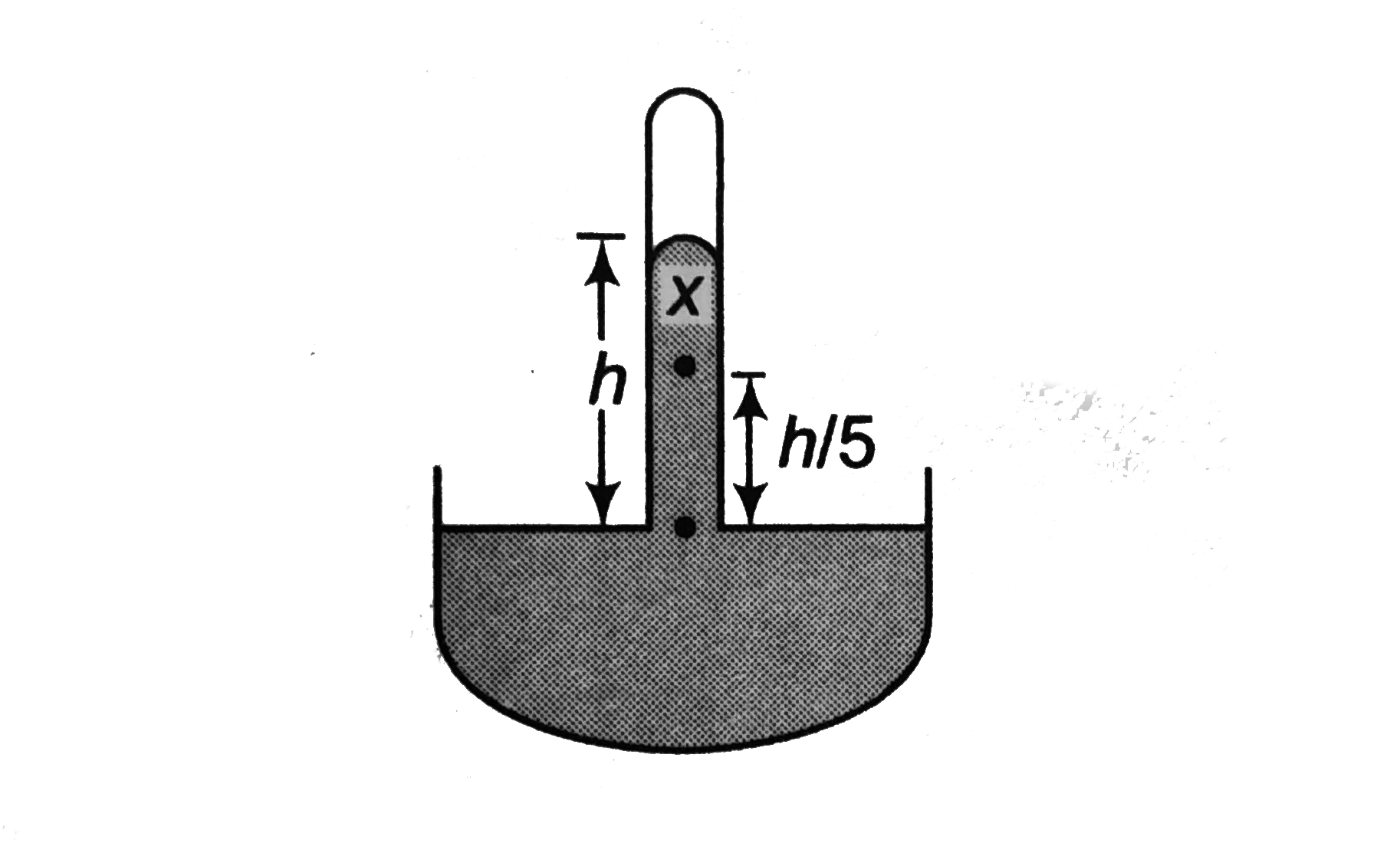A mercury barometer always reads less than actual pressure.
To solve the question "A mercury barometer always reads less than actual pressure," we need to understand the working principle of the mercury barometer and the factors that affect its readings. Here’s a step-by-step solution:
Step 1: Understanding the Mercury Barometer
A mercury barometer consists of a glass tube filled with mercury, which is inverted into a reservoir of mercury. The height of the mercury column in the tube is used to measure atmospheric pressure.
Hint: Remember that the height of the mercury column is directly related to the atmospheric pressure acting on the surface of the mercury in the reservoir.
Step 2: Atmospheric Pressure and Barometric Height
The height of the mercury column (barometric height) is determined by the balance between the atmospheric pressure and the weight of the mercury column. The atmospheric pressure pushes down on the mercury in the reservoir, causing the mercury to rise in the tube.
Hint: Consider how the atmospheric pressure is transmitted through the mercury in the reservoir to support the weight of the mercury column.
Step 3: Effect of Surface Tension
One of the key factors that causes the mercury barometer to read less than the actual atmospheric pressure is surface tension. The surface tension of mercury creates a meniscus at the top of the mercury column, which causes the mercury to be depressed slightly.
Hint: Think about how the surface tension affects the level of the liquid in a container, especially in a narrow tube.
Step 4: Conclusion on Reading of the Barometer
Due to the effect of surface tension, the actual height of the mercury column is slightly less than what it would be if there were no surface tension. This means that the reading on the barometer will always be less than the actual atmospheric pressure.
Hint: Reflect on how the physical properties of liquids, like surface tension, can influence measurements in instruments.
Final Answer
Therefore, a mercury barometer always reads less than the actual pressure because the surface tension of mercury depresses the mercury column, resulting in a lower reading than the true atmospheric pressure.
A mercury barometer consists of a glass tube filled with mercury, which is inverted into a reservoir of mercury. The height of the mercury column in the tube is used to measure atmospheric pressure.
The height of the mercury column (barometric height) is determined by the balance between the atmospheric pressure and the weight of the mercury column. The atmospheric pressure pushes down on the mercury in the reservoir, causing the mercury to rise in the tube.
One of the key factors that causes the mercury barometer to read less than the actual atmospheric pressure is surface tension. The surface tension of mercury creates a meniscus at the top of the mercury column, which causes the mercury to be depressed slightly.
Due to the effect of surface tension, the actual height of the mercury column is slightly less than what it would be if there were no surface tension. This means that the reading on the barometer will always be less than the actual atmospheric pressure.
Therefore, a mercury barometer always reads less than the actual pressure because the surface tension of mercury depresses the mercury column, resulting in a lower reading than the true atmospheric pressure.
Topper's Solved these Questions
- Mechanical Properties of fluidsBOOK - SL ARORACHAPTER - Mechanical Properties of fluidsEXERCISE - Exercise
459 Videos
- Mathematical toolsBOOK - SL ARORACHAPTER - Mathematical toolsEXERCISE - Exercise
20 Videos
- Mechanical Properties of SolidsBOOK - SL ARORACHAPTER - Mechanical Properties of SolidsEXERCISE - Example
113 Videos
Similar Questions
Knowledge Check
The mercury barometer was invented by
ACelsiusBFahrenheitCTorricelliDBernoulliThe mercury barometer was invented by:
AArchimedesBToricelliCFahrenheitDCelciusA barometer is an instrument that is used for the measurement of pressure The construction of the barometer is as follows:
A thin narrow calibrated capillary tube is filled to the brim with a liquid such as mercury and is inverted into a through filled with the same fluid Now depending on the external atmospheric pressure the level of the inside capillary comes to rest, then the net forces on the column should be balanced Applying force balance we get Patm×A=m×g
(A is the cross-sectional area of the capillary tube) if ρ is the density of the fluid, then m=ρ×g×h
(h is the height to which mercury has risen in the capillary)
Hence Patm×A=(ρ×g×h)×AorPatm=ρgh
Faulty Barometer:
An ideal barometer will show a correct reading only if the space above the mercury column is vacuum but in case if some gas column is trapped in the space above the mercury column then the barometer is classified as a faulty barometer. The reading of such a barometer will be less than the true pressure
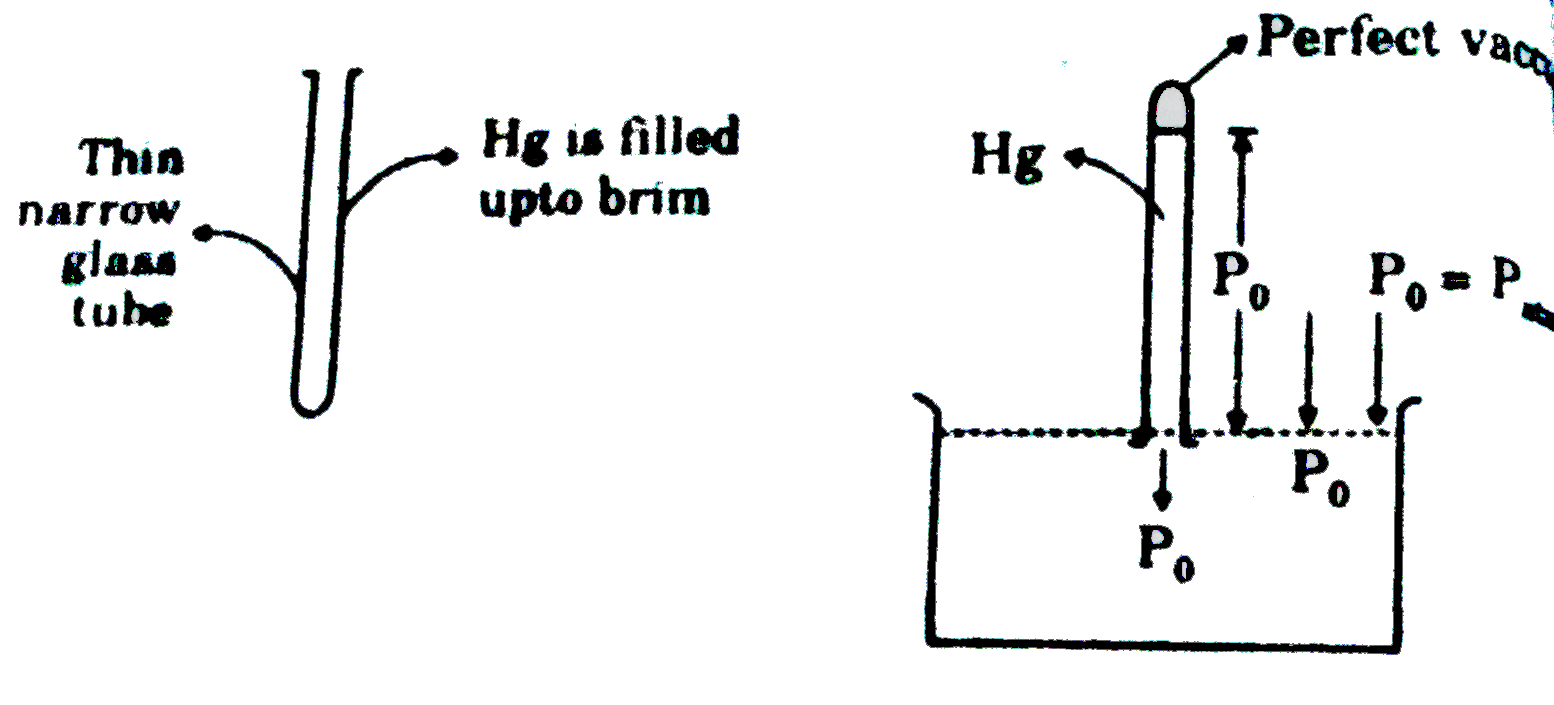
For such a faulty barometer
P0A=mg+PgasA
P0=ρhg+Pgas
or ρgh=P0−Pgas
A tube closed at one end is dipped in mercury as shown in figure such that the closed surface coincides with the mercury level in the container By how much length of the tube should be extended such that the level of Hg in the tube is 5 cm below the mercury level inside the container? (Assume temperature remains constant)
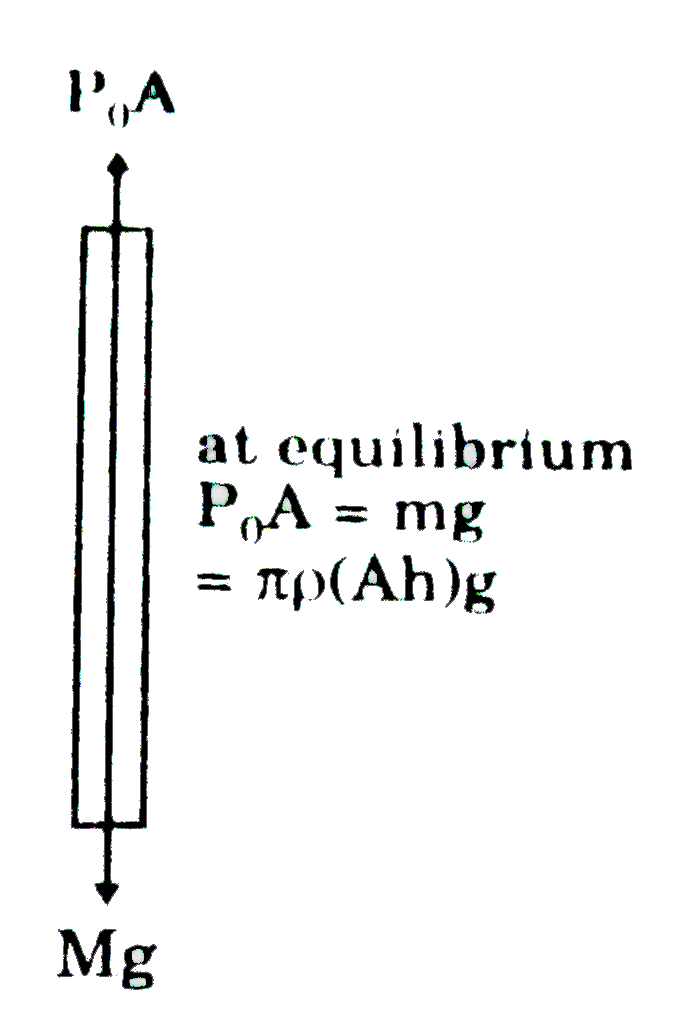
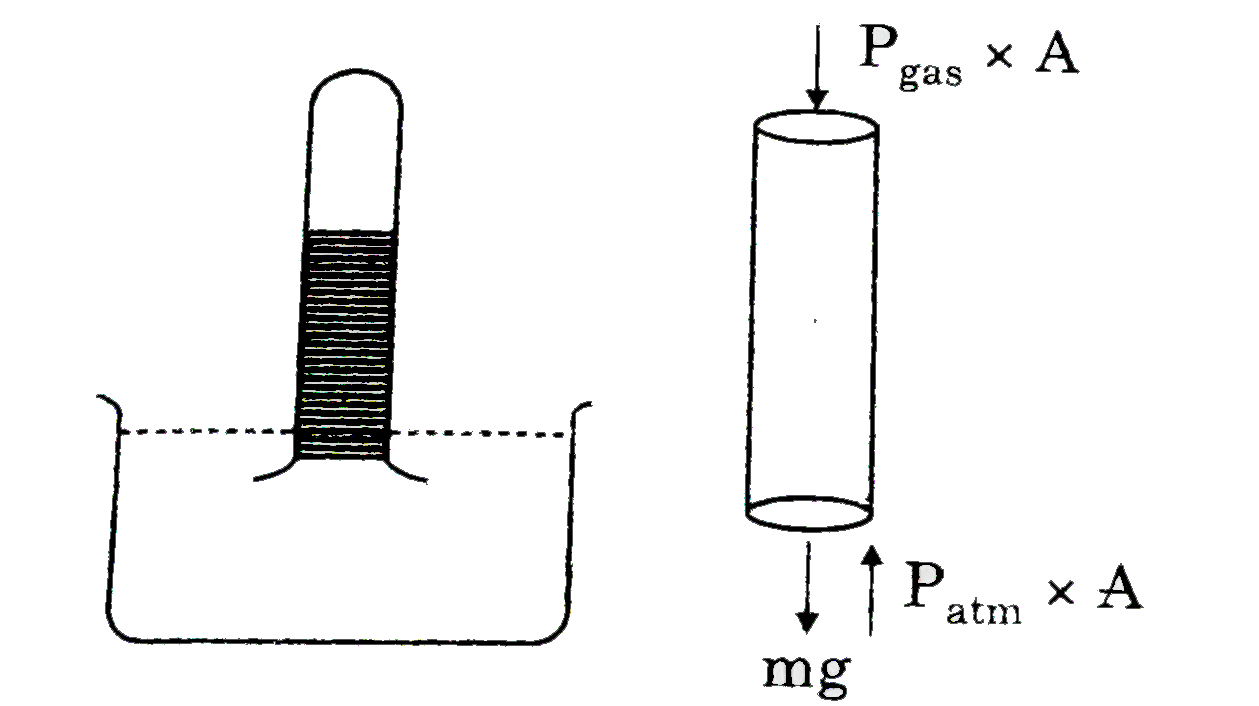
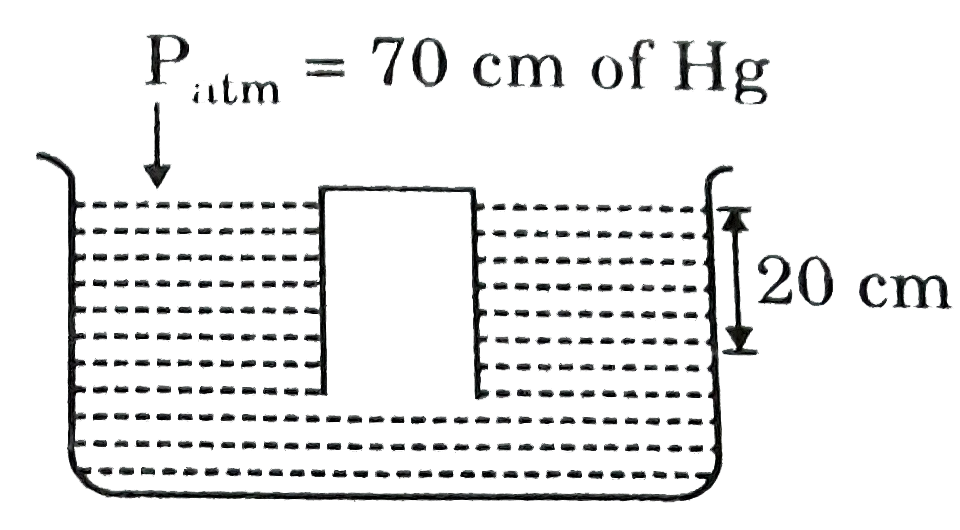 A18 cmB19 cmC24 cmD30 cm
A18 cmB19 cmC24 cmD30 cm
A barometer is an instrument that is used for the measurement of pressure The construction of the barometer is as follows:
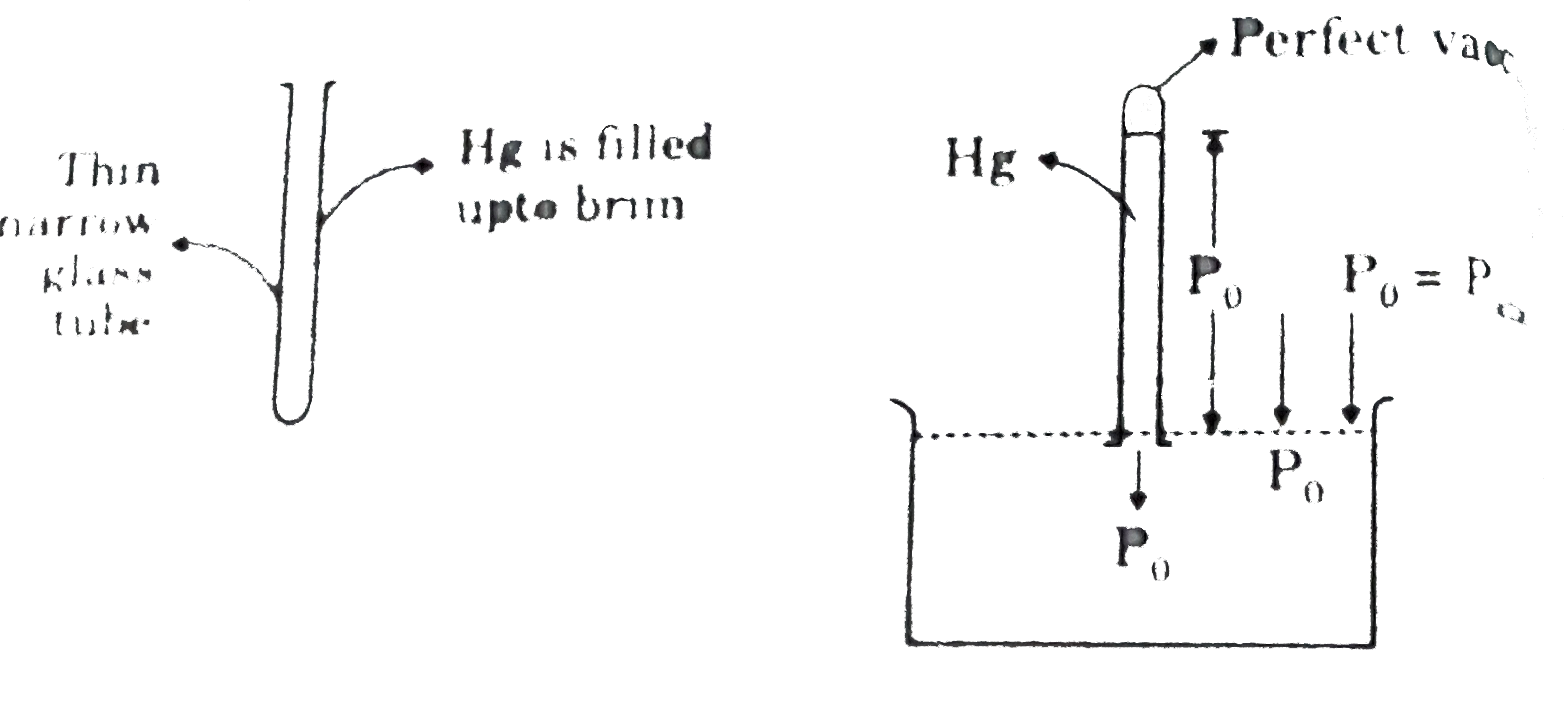
A thin narrow calibrated capillary tube is filled to the brim with a liquid such as mercury and is inverted into a through filled with the same fluid Now depending on the external atmospheric pressure the level of the inside capillary comes to rest, then the net forces on the column should be balanced Applying force balance we get Patm×A=m×g
(A is the cross-sectional area of the capillary tube) if ρ is the density of the fluid, then m=ρ×g×h
(h is the height to which mercury has risen in the capillary)
Hence Patm×A=(ρ×g×h)×AorPatm=ρgh
Faulty Barometer:
An ideal barometer will show a correct reading only if the space above the mercury column is vacuum but in case if some gas column is trapped in the space above the mercury column then the barometer is classified as a faulty barometer. The reading of such a barometer will be less than the true pressure
For such a faulty barometer
P0A=mg+PgasA
P0=ρhg+Pgas
or ρgh=P0−Pgas
If the tube shown below is placed vertically with the open and upward then the length of the air column will be (Assume temperature remains constant)
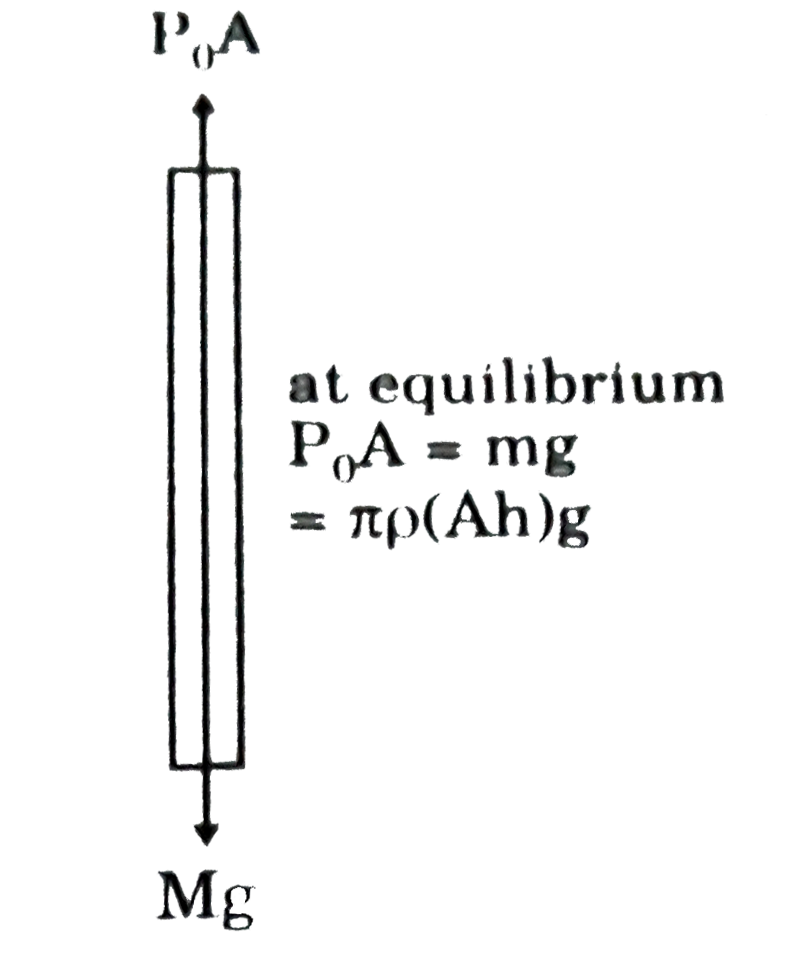
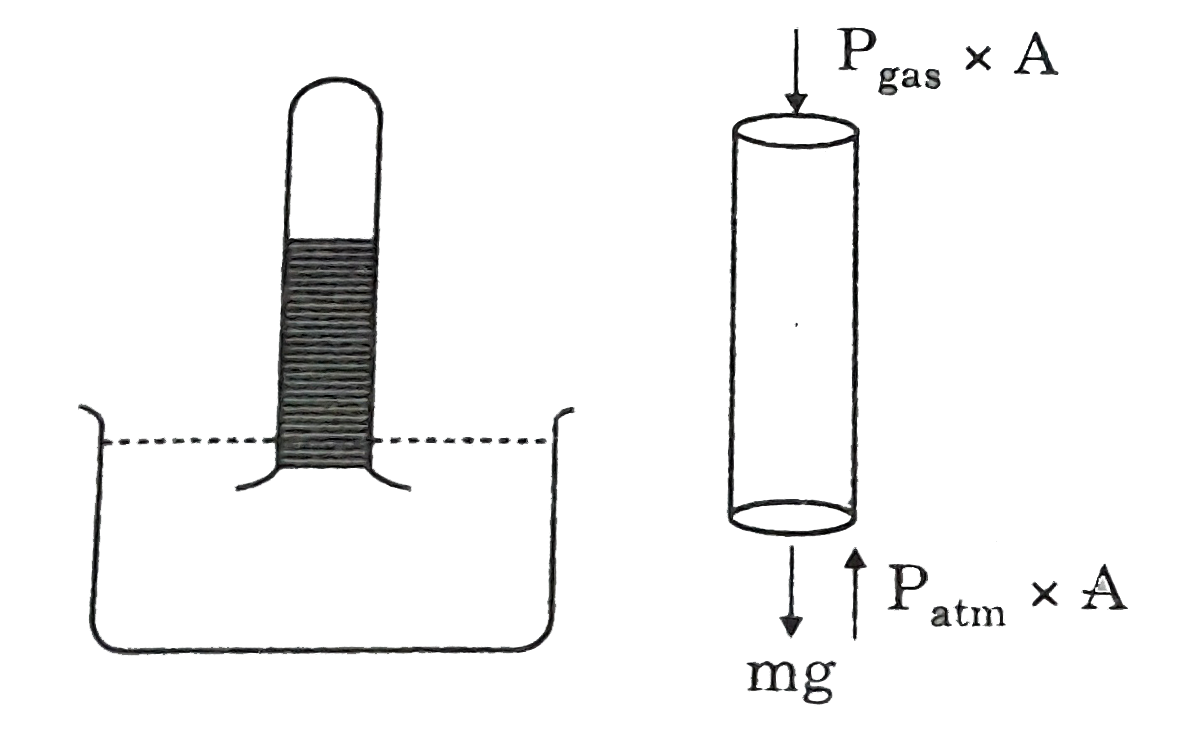

View SolutionA mercury barometer is defective. When an accurate barometer reads 770 mn, the defective one reads 760 mn. When the accurate one reads 750 mn, the defective one reads 742 mn. Then
The reading of the accurate barometer, when defective are reads 752mm is
View SolutionA mercury barometer is defective. When an accurate barometer reads 770 mn, the defective one reads 760 mn. When the accurate one reads 750 mn, the defective one reads 742 mn. Then
The length of air coloumn when accurate barometer reads 770mm is
View SolutionSuppose the pressure at the surface of mercury in as barometer tube is P1 and the pressure at the surface of mercury in the cup is P2.
View SolutionA mercury barometer reads 75cm in vertical position . If the tube is inclined by 60∘ to the vertical, the length of the mercury in the tube will be
View Solution

